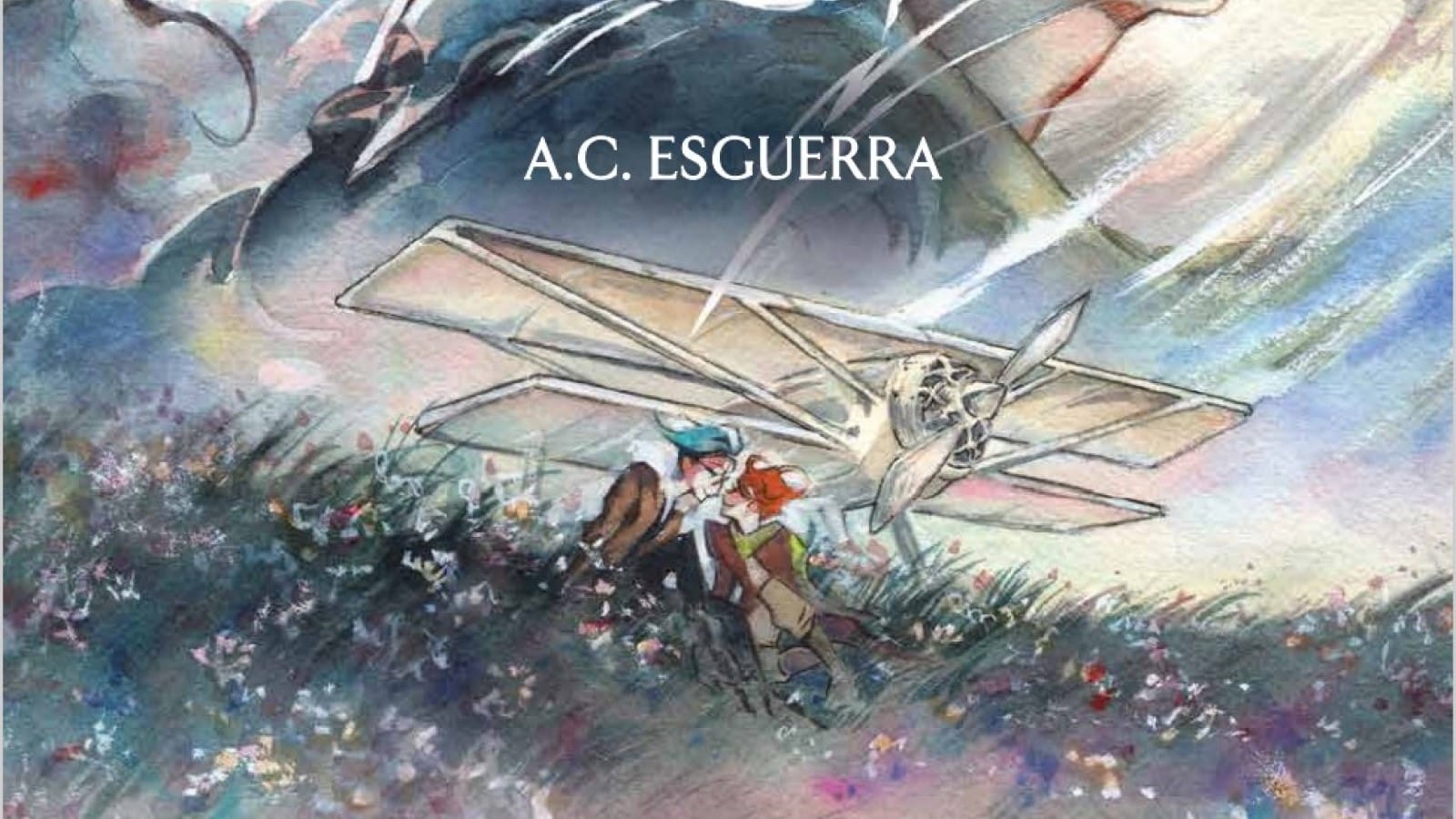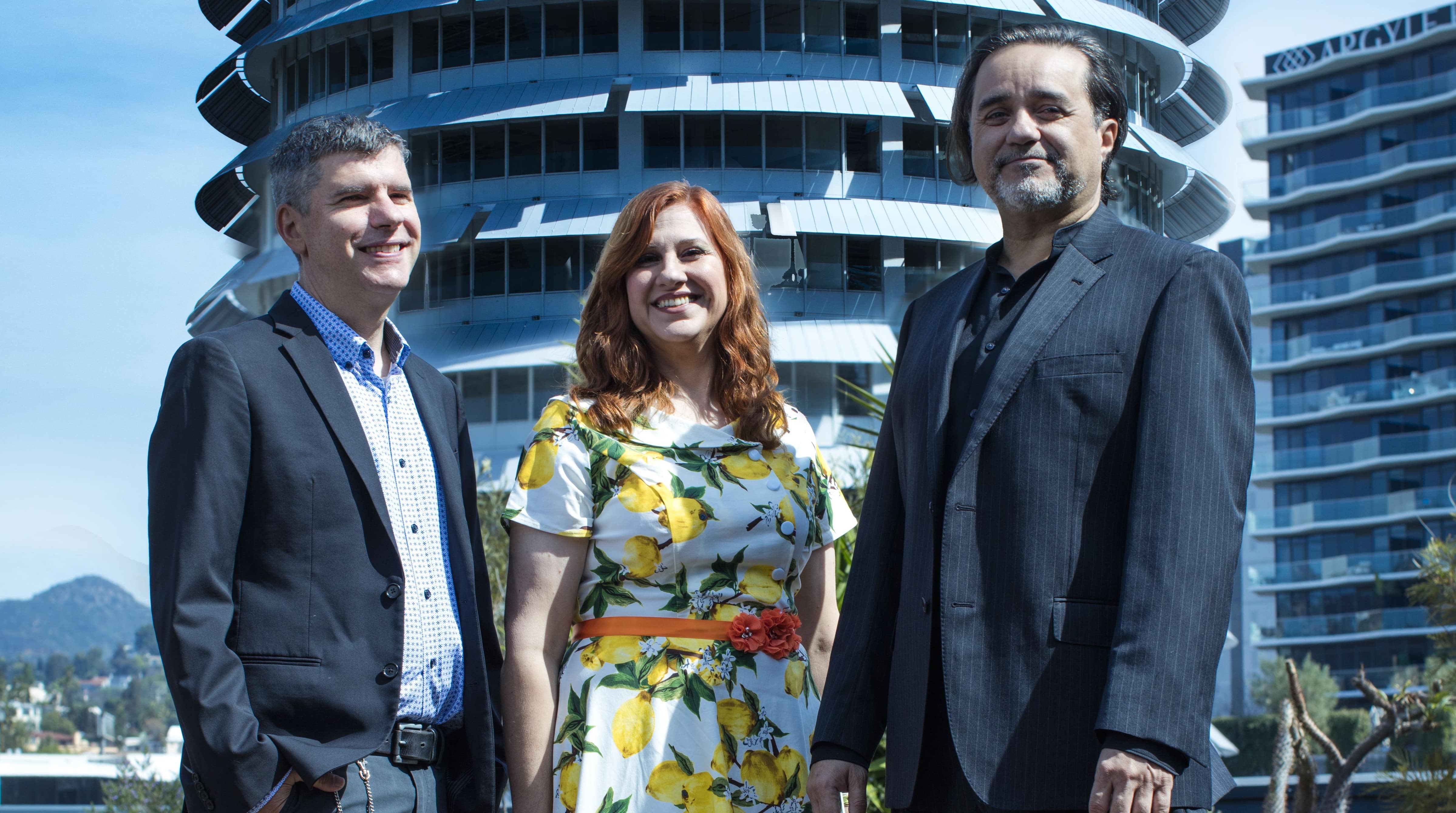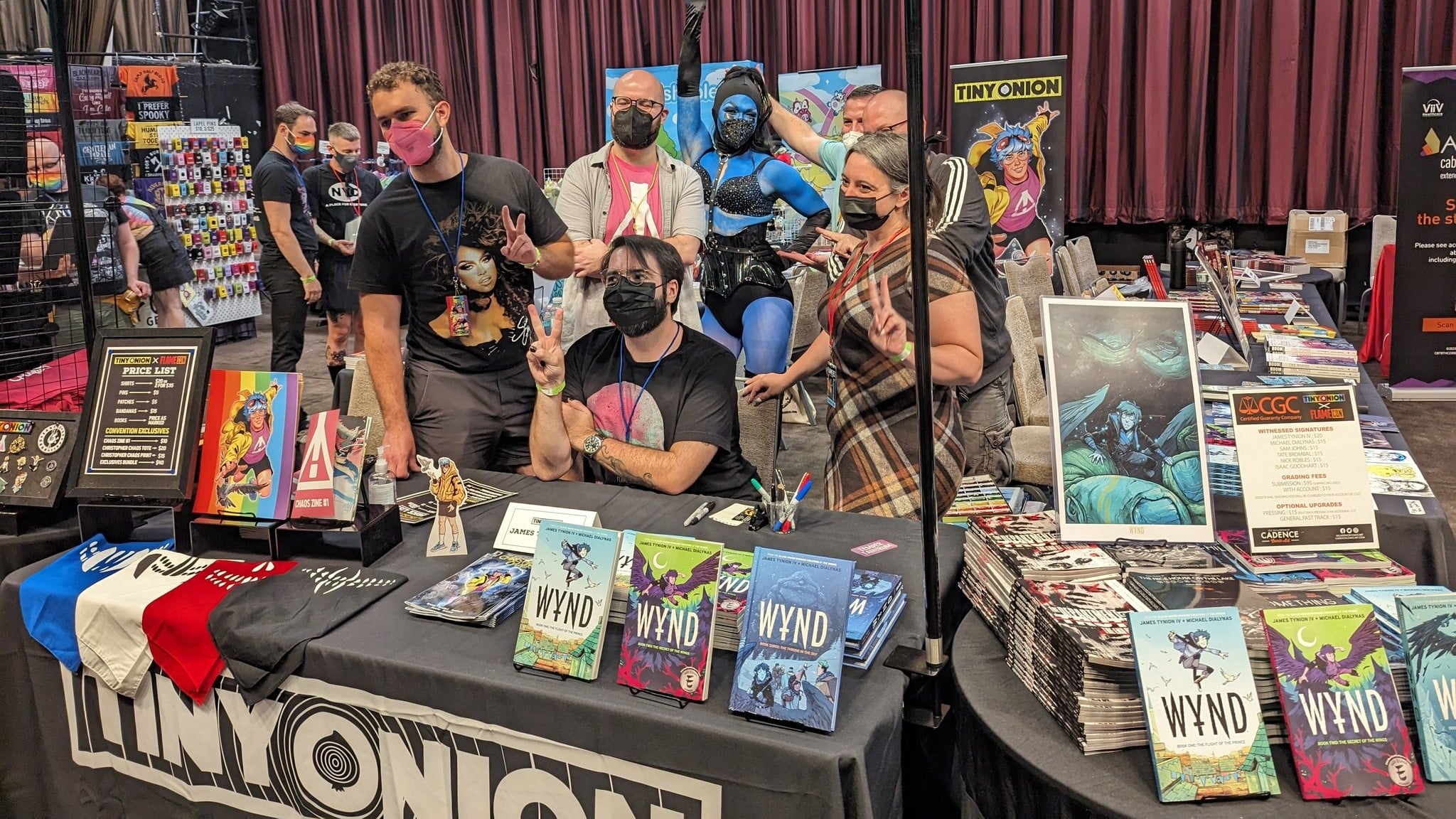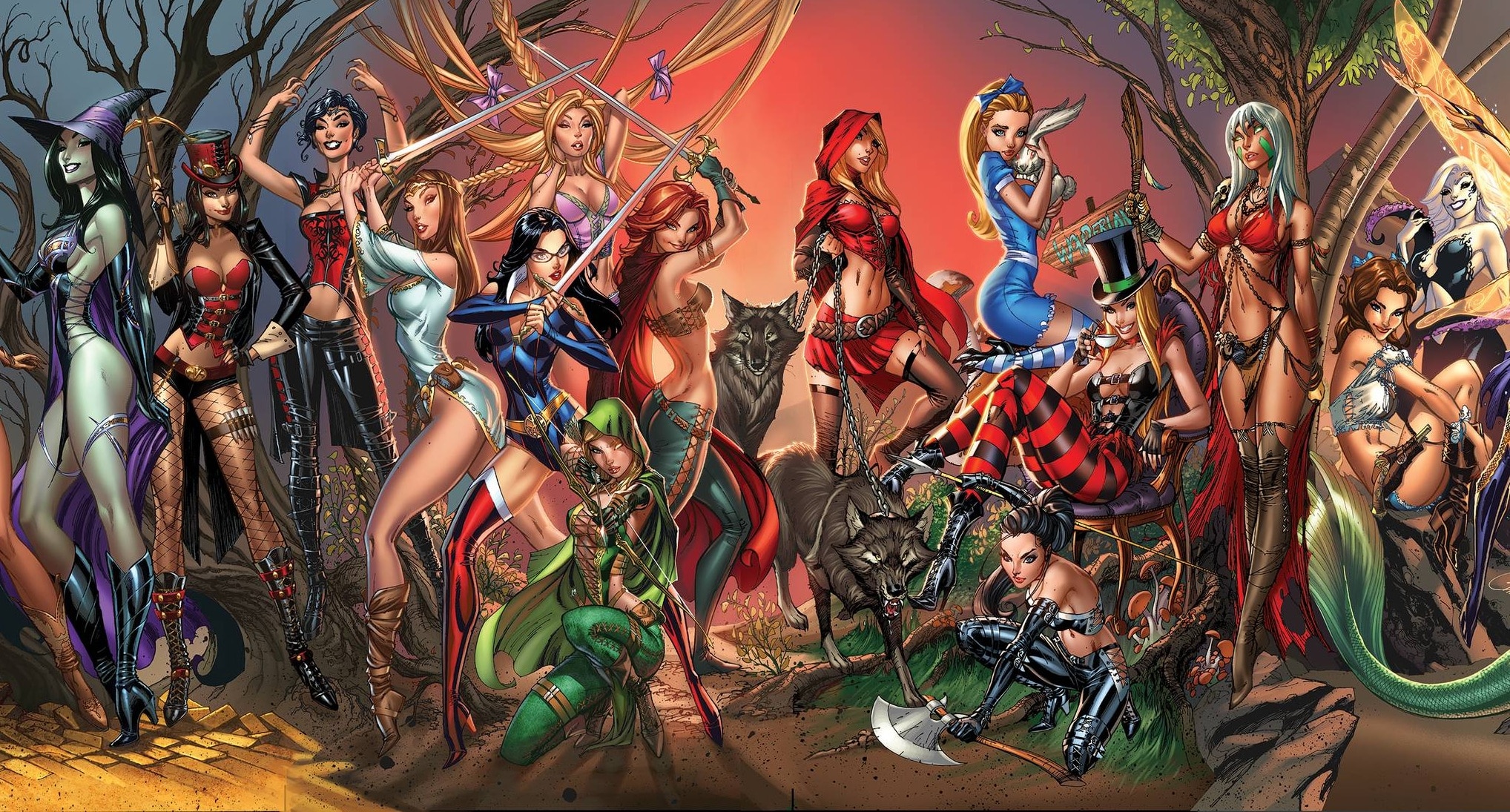A.C. Esguerra is a comics author and illustrator. Their debut, black-and-white, original graphic novel, Eighty Days — a queer romance inspired by the early days of aviation — was published by BOOM Studios’ Archaia imprint this month. A novella version of the story won a Prism Queer Press Grant Award in 2016. Esguerra was born in Manila, Philippines, and now lives in Los Angeles with their partner and a very good shiba inu.
After reading through Eighty Days, I was able to talk with them about their process and learn more about the book.
Cat Purcell: Hi, A.C. I really appreciated getting an advance copy of Eighty Days. It’s a really cool story.
A.C. Esguerra: Thank you! I’m so glad you enjoyed it.

Cat: What inspired your story of a pilot in a facist society?
A.C.: I’ve always had a love of history and flight and aviation. Around the time I was coming up with these ideas for Eighty Days, I was reading a lot of pilot autobiographies written by pilots of the 1920s and 1930s — you know, the Golden Age of Flight. I was so taken by the way they wrote about their travels and the way they wrote with such adventure and romanticism. Over those writings and fantasy fiction in general, there is always this specter of imperialism. I wanted to tell a story in this setting with these aesthetics but (that) would criticize and interrogate those aspects of imperialism. Who gets to travel? Who gets to be free? What does that mean, and who has power?
Cat: Tell us more about the class system in this world and how it impacts your characters.
A.C.: Avo starts out as an aviation guild that gained a lot of power after a previous war. During this ostensible peacetime, they’re growing in power and providing travel and services to various regions. But power corrupts, you know? Taking the broad strokes of our real-life history based on the early 20th century in the West and Europe, but I wanted to recast it with different people in unexpected places. Heroes that don’t look like the normal way you’d expect heroes to look. So the characters just emerged from this. How would a person that looks like this or has this kind of background move in a society where flying means power?
Cat: Did you have tiers set up when you came up with the class system? Like you talk about Vulpes being “No-Class.” Did you set up limits for each tier?
A.C.: Yeah! I don’t get into it in the story too much, but basically so Jay Corvidae is the main character. Corvidae is the Latin species term for crow, and Vulpes is, of course, a fox. This is a very flight-centric society, so Avo values flight and those that can be pilots and those that can access that power, so the closer they are to a bird status, the more acceptable to the society they might be. But you’ll notice it’s not really consistent. I’m thinking about my own experience as an Asian immigrant to America. A lot of us will change our names or take on American names to fit in or assimilate. That adds texture to this world, where some people have a mix of names depending on how much power they have or (whether they could) do their paperwork.
Cat: That’s fascinating. I would have loved to see a breakdown of it, but I’m a bit of a data nerd. I really like the names with Vulpes and Corvidae. That was clever.
Radio plays an important role in how Jay and Fix navigate their roles and your story. Do you have an interest in radio or codes, or was this just a construct of the technology available in their world?
A.C.: It was kind of both. I was researching the time period and radio transmissions. As I was researching how they communicated with the limited technology back then, I just got really interested in it, both in how the technology works and what the limitations of it did to the way people were able to communicate with each other. When you read telegrams, they become almost like tweets! Especially when tweets were more limited. People had to really condense what they really wanted to say, right? Or maybe leave out or imply things. So I was very interested even though I’m not a radio ham or anything. I think it’s really cool and am just intrigued by that technology. And that time period.
Cat: Fix and Jay are a queer couple that would face discrimination in many places in our world, though there is not much at all they face in theirs. Was letting their relationship be peaceful important amid so much oppression?
A.C.: Yeah. So as a queer person myself, and a queer person of color no less, I have a desire to not necessarily see conflict like that. I want to get away from making queer stories only about coming out or homophobia or these specifically queer issues and conflicts. They are very important to talk about, obviously, because they’re still happening all over the world. But for this story, I wanted to talk about a war-time romance, anti-capitalism and anti-facism. I wanted the queer characters to face intersecting problems and struggles for people of color especially. I wanted to talk about how we struggle with issues beyond those like who we chose to love. What do we do to save them? What do we do to preserve that love, and the story was very much constructed around that idea. They go through a lot as it is!

Cat: When you were developing this story, did it start as a love story or a resistance story?
A.C.: It was always a little bit of both; a love story set against the backdrop of resistance and oppression, a corrupt system. The first chapter of the book was self-published and from Jay’s point of view was more focused on the romance aspect, but I knew as I was developing the longer story that I would need to talk about the kind of system that they’re living in and what that love needs to endure and how to survive that if it does. It kind of grew into a much longer epic than I anticipated, but I knew it was going to be a long-term, slow-burn thing.
Cat: Tell us a bit about your process. Did you write, letter and draw all of it?
A.C.: Yes.
Cat: Wow! So where did you start with each page? How did you put all of those pieces together?
A.C.: For me, comics always starts in writing. My initial concepts are usually bits of dialogue or scenes or even poetic, atmospheric things that I develop into a script. And then I take the script and section it off by how much of the paper i think it’s going to take to do. Then I take the thumbnails and draw the full-size pages in pencil on bristol board and then ink them traditionally with brush and ink. Next I scan them and clean them up digitally. Next I do the lettering. The lettering for this book was done by hand, and then I made a font out of my handwriting. Some of the handwriting of the characters, like Fix and Sable’s handwriting, was hand lettering. Lots and lots of cleanup and then meshing the image with the sound effects. That’s how I produce a page!
Cat: Incredible. I really appreciated the way you incorporated the lettering into the pages. There’s one particular shot with Fix and Jay underneath the plane in the rain and you see the raindrops turn into the sound effects.
A.C.: Oh yeah! Thank you!
Cat: How long did it take you from start to finish?
A.C.: It was a seven-year process. The first concept ideas came to me in about summer 2014. And then I did the first part of the book, the self-published part for the rest of 2014. Then there was a long break from 2014-2018 when I was just developing the rest of the story, fleshing out the characters and developing the world more. Then I picked the words back up back in 2018, and from there it was the process I mentioned earlier from scripts, inks, from lettering and production until now in 2021! It was a very long thing!
Cat: Well, congratulations! It must feel so good to have it out in the world.
A.C.: It does. It’s amazing! I’m just so gratified that everyone is taking the time to read such a big book about such heavy stuff and then telling me they wish it was longer!

Cat: There’s a bit of a twist at the end that I obviously don’t want you to reveal about the way messages are communicated. I thought it was very clever. Do you think it’s important to keep some types of analog over modern technology?
A.C.: I think it’s important to keep human connections and genuine connections alive no matter what technology is being used. I’m a big analog nerd. I love journaling and I keep a journal and write everything by hand and I’m working traditionally. I do know how to work digitally and I do sometimes, but I always come back to by hand because it makes me feel connected to the material, my art and my own inner voice. I think that’s definitely something that analog can do, but the main thing is that we stay connected to our humanity no matter what technologies develop.
Cat: What are you reading and watching right now?
A.C.: Right now I’m watching Beastars on Netflix, which is based on a manga by Paru Itagaki. It’s about anthro-animal people in high school and the drama and stuff involved with growing up, but it’s also about social commentary and predator-and-prey stuff and a little bit of horror. I binged it all in two days.
For reading, I’ve been reading a lot of manga. I just got into Witch Hat Atelier by Kamome Shirahama about witches where their magic source is accessed through drawing, which is so cool and so amazing! She’s another great traditional artist, so the art is beautiful and the story is so enchanting. It’s good! Check it out!
Cat: What projects do you have coming up next?
A.C.: Right now I am working on a freelance project to be announced, so I won’t say too much. I’m not the writer on that one, I’m the artist. But if you liked Eighty Days, you might be interested in that one. We’ll probably be talking about that one coming up next year. Other than that, as far as my own original, written and drawn by me, I am working on another one. It’s in the very early stages right now. But I’m excited for it, and I hope everyone will look forward to it. Hopefully it won’t take seven years.
Cat Purcell is a career services librarian, cosplayer, artist and massive coffee consumer. Follow her @thatcatpurcell.bsky.social.






